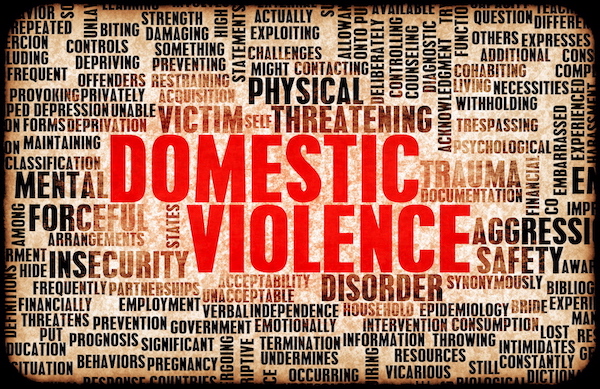Building and maintaining a sustainable marital relationship or partnership is crucial to our existence in a society. The home that a child grows up can have a significant influence on the outcome of such a child. Therefore, there is a need to do everything possible to build and maintain a violence-free home.
There are myriads of problems that can ruin marriages, partnerships and families in general. Amongst these problems is domestic violence. Domestic violence can affect married partners (current & ex), sexual partners, boyfriends and girlfriends, civil partners, dating partners, etc.
Domestic violence is one problem that, most times, it creeps in in a very subtle way. Sometimes it takes a longer time than necessary for victims to realise what they are going through. Some victims can suffer these problems for years before they realise the problem or before they are rescued from it.
One obvious challenge that I think contributes to the late diagnosis of domestic violence is that people do not really understand what domestic violence is all about. There are many important questions that people, marital couples, partners, parents, children and others should ask regarding this topic.
Some of these questions are: What is domestic violence? What form does domestic violence take? What are the early signs of domestic violence? If I observe any of these signs, what should I do? Who should I contact if I am a victim, or I know someone who is a victim?
In this introductory article on domestic violence series on this platform (Dazzling Insights Blog), I will try to highlight some of the key facts that you should know about domestic violence. Some of the points here will debunk unbalanced perceptions of domestic violence, and will give hope to domestic violence victims. Here we go:
1. Both genders can be victims
Anytime the word domestic violence is mentioned; some people can intuitively think that the victims are women or the female gender. This is not just incorrect; it also blocks the possibility of helping victims of the male gender. Men are equally victims of domestic violence, but the number of victims that are men are much lesser than that of women.
Subscribe to Dazzling Insights Blog
You will be notified as soon as a new article is published
2. Abuse can come in different forms
Domestic-related violence can come in different forms, such as physical, emotional, psychological and others. I dare to mention that emotional and psychological torture might even be more impactful and of intense consequences than physical abuse.
Some of the indicators listed here can help one to pick up some signs that domestic violence is on its way or is already taking place. The indicators are: physical threats in relationships, unexplainable yet intentional behaviour by one's partner, avoidance of discussion, constant intimidation, cohabiting without a clear purpose, undermining opinions, taking significant decisions without consent, intentional infidelity, withdrawal of verbal communication, forceful relationship arrangements.
Quick facts on domestic violence
- Data on domestic violence are generally scarce, especially in developing countries.
- In the USA, 1 in 4 women and more than 1 in 9 men experience violence of some sort.
- Women with household incomes of less than $7,500 are seven times as likely as women with household incomes over $75,000 to experience domestic violence.
- Domestic abuse can have an alarming cost effect. It has been estimated that domestic abuse costs the public £23 billion per annum.
Others are: the feeling of insecurity, financial threats and denials, verbal abuse, trespassing, instructions to deliberately withdraw from friends, keeping malice, disrespectful of boundaries, exploitation of any kind, deprivation of conjugal rights, constant harassment and being embarrassed in public or before children, aggression of any kind, a controlling spouse, provoking words and actions, igniting depression triggers, sexual abuse, and others.
I wish I would have the time to explore each of these aspects in the light of this elaborate topic. Identifying the indicators of domestic violence is the key to finding a solution or seeking help. Knowing these signs can save your marriage relationship or that of your friends or family members.
"It is not only the victims of domestic violence that require therapy and rehabilitation – the abuser needs to be assisted too."

3. It is a global problem
Like most human problems, domestic violence is a global problem. Couples or partners from every race and culture can be affected, although in some cultures, it might not occur as often as others due to their cultural orientation or belief. Having this awareness will help everyone to be alert and watch out for people that might be going through such experiences.
4. Victims can recover and overcome it
I would like to inject a bit of hope here – it doesn’t matter how many years you have been a victim of domestic violence, you can still recover and overcome it. Getting out of such bad relationships is not enough, you have to actively seek help by way of therapy, rehabilitation, counselling, etc.
Share this Dazzling Post
5. Other people can be affected
Domestic violence has far-reaching impacts on other family members, friends and the society at large. Imagine your friend who is repeatedly abused in his/her marriage – you will definitely be affected. Your time and emotional energy might go into helping such an individual, and it will undoubtedly affect your relationship.
Mentioning how domestic violence might affect children is well documented. Most children from homes that domestic violence occurs can have a psychological problem that might erode their self-worth and confidence. Any abuser should think about this first, and refrain from such a demeaning act.

"One obvious challenge that I think contributes to the late diagnosis of domestic violence is that people do not really understand what domestic violence is all about."
6. Both the victim and the abuser need therapy
It is not only the victims of domestic violence that require therapy and rehabilitation – the abuser needs to be assisted too. Some perpetrators of domestic abuses are unaware of what they are doing, and are completely helpless. In the first place, a normal and sane human being would not treat another person with such disdain and unacceptable behaviour.
I encourage you to actively lookout for help for both the victim and the abuser. The reason is that the victim, the abuser, and even the people that are immediately affected all need help. For example, the children from such home require help to re-orientate their minds to supposedly ‘normal' and better behaviour in society.
I hope this article will help to create awareness and open up discussions about the problems of domestic violence in our families and relationships. In the article following, I will explore the reasons no one should condone or tolerate domestic violence. #Stop domestic violence. Let’s keep dazzling together.

